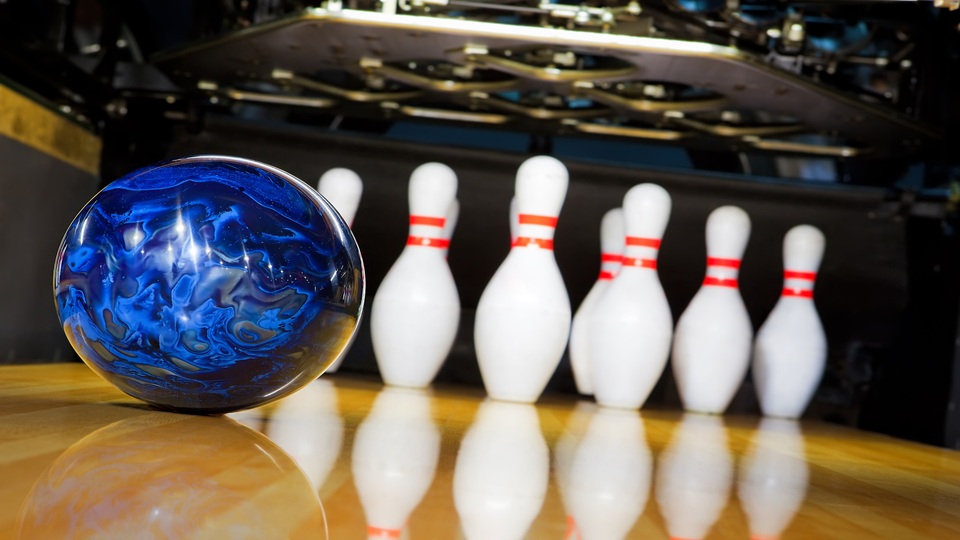Tenpin bowling, which remains the number one participation sport in the United States of America, sees players attempting to knock down as many pins as possible with two shots. A strike, recorded when all ten pins are toppled on the first shot, can lead to bonus points when hit consecutively.
Dr Curtis Hooper from the University’s Sports Technology Institute (STI), alongside researchers from Princeton, MIT, the University of New Mexico, and Swarthmore College, have now shared a model that identifies the best place to aim the bowling ball for a given bowler on a given lane condition.
To date, most methods for predicting the outcome of bowling shots have relied on statistics describing real-life bowlers, rather than analysing the dynamics of the ball and shot itself. These approaches often don’t consider individual playing style.
Instead, using equations created by 18th-century mathematician Leonhard Euler, the academics’ model accounts for several factors – including the amount of oil applied to bowling lanes in competitive tournaments and how it’s distributed.
To illustrate the results of the model, they concluded that the optimal place to play for a bowler who releases the ball at 17.9 mph with 416 revelations per minute with 45 degrees of axis rotation is to release the ball on 28th board from the left at an angle of 1.8 degrees to the right of centre.
Dr Hooper said: “The ability to strike regularly is of paramount importance for bowlers should they wish to obtain high scores and compete at an elite level. Therefore, bowlers and their coaches are often looking to maximise the size of the contact area on pin number one (the head pin) to better increase their chance of getting a strike - giving them an advantage over the opposition.
“The position of the ball as it hits the pins is important. If the ball travels through the pins without much deflection, and the position of the ball towards the last row of pins is close to the centre of the lane, then the target area around the head pin increases significantly.”
He added: “Our model, which provides a solution to these problems, could become a useful tool for anyone involved with the sport as it gives them the ability to accurately predict ball trajectories which could lead to the discoveries of new strategies and equipment designs.”
In the future, the group aims to improve the model’s accuracy by incorporating even more factors, including the topography of uneven bowling lanes. They also want to connect with professionals in the industry to better understand how the model may be tailored to fit their needs.
